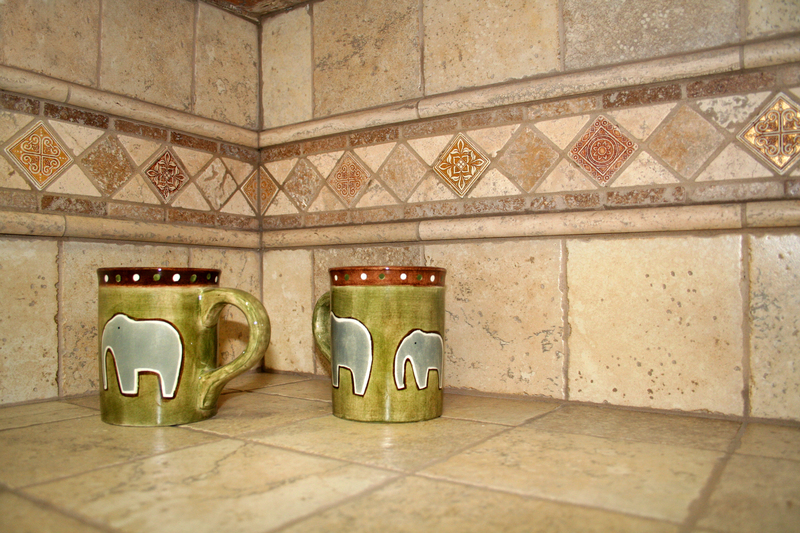Discover the Science Behind Jewellery Cleaning
Posted on 19/08/2025
Discover the Science Behind Jewellery Cleaning
Jewellery holds a special place in our lives, symbolizing cherished memories and adding sparkle to our style. But over time, even the shiniest pieces can lose their lustre. Have you ever wondered why jewellery needs cleaning or which methods are best? In this in-depth guide, we unravel the fascinating science behind jewellery cleaning, offering insight into the chemical and physical processes that restore brilliance to your treasured pieces.

Understanding the Need for Jewellery Cleaning
Jewellery is exposed daily to a host of substances: natural oils from our skin, lotions, cosmetics, dust, and environmental contaminants. Over time, these contribute to the gradual build-up of grime, tarnish, and oxidation. The science behind this process is both simple and captivating.
- Tarnish: Many metals, like silver and copper, react with oxygen and moisture in the air, forming a dull layer called tarnish.
- Grime and Residue: Everyday activities leave residue from oils, sweat, and beauty products that adhere to metal and stone surfaces.
- Scratches and Abrasions: Fine dust particles can create micro-scratches, dulling the appearance of polished gems and metals.
Understanding these mechanisms is crucial for safe and effective jewellery cleaning. The science of cleaning jewellery relies on chemical reactions, physical removal, and modern technologies--all working to bring back the brilliance.
The Chemistry of Jewellery Cleaning: Breaking Down the Build-Up
The primary goal of any cleaning process is to remove unwanted substances and restore the natural shine. Let's delve into the chemistry at work when you clean your jewellery.
1. Removing Tarnish: An Oxidation Process
Tarnish results from oxidation, a chemical reaction where metal interacts with air and moisture. For instance, silver tarnish primarily consists of silver sulfide (Ag2S), which forms when silver reacts with sulfur compounds in the air.
To reverse this, cleaning products often use mild acids or abrasives to remove the tarnished layer.
- Baking soda and aluminium foil: This home remedy creates an electrolytic reaction that converts silver sulfide back to shiny silver.
- Commercial silver dips: These contain thiourea and acids to dissolve tarnish quickly.
- Toothpaste or mild abrasives: Gently abrade away the tarnished surface without damaging finer details.
2. Dissolving Oily Residues: The Role of Surfactants
Natural oils and lotions are often hydrophobic substances--they do not dissolve well in water. This is where surfactants, found in soaps and detergents, come into play.
- Surfactants have a hydrophilic (water-attracting) head and a hydrophobic (oil-attracting) tail.
- They surround and break up oil molecules, allowing water to wash them away effectively.
- This science is why a few drops of mild dish soap can work wonders on dirty rings or necklaces.
Soaking your jewellery in a warm soapy solution loosens grime, which can then be gently brushed off with a soft-bristled toothbrush.
3. Safe Gem and Metal Care: pH and Sensitivity
The sensitivity of materials must be considered when choosing a cleaning agent. Precious stones like opals, pearls, and emeralds are far more delicate than diamonds or sapphires. Acidic cleaners or abrasive pastes can cause permanent damage. That's why understanding the unique chemistry of each material is vital.
- Gold: Non-reactive but can scratch easily; avoid harsh abrasives.
- Silver: Reacts with sulfur, needs gentle tarnish removal.
- Pearls: Porous and susceptible to acids and moisture; clean only with a damp, soft cloth.
- Gemstones: Varied structures mean cleaning must be tailored--always check for compatibility before using chemicals.
Modern Methods: How Technology Improves Jewellery Cleaning
While traditional cleaning approaches still work, recent technological advancements have made jewellery cleaning safer and more effective. Below, we explore the science that powers these modern innovations.
1. Ultrasonic Cleaners: Harnessing Sound Waves
Ultrasonic cleaning is a widely-used method in professional jewellery maintenance. But what makes it so effective?
- High-frequency sound waves create tiny bubbles in a cleaning solution through cavitation.
- When these bubbles collapse, they produce microscopic shockwaves that dislodge dirt from cracks, crevices, and intricate settings.
- No harsh chemicals needed--just water and a mild detergent serve as the cleaning solution.
- Safe for hard stones and most metals, but not recommended for porous gems or loose settings.
2. Steam Cleaning: Pure Power
Steam cleaners use high-pressure, high-temperature steam to blast away dirt and residue. The heat helps melt and loosen oils, while the pressure sends contaminants flying off. Professional jewellers often use this method because:
- It's chemical-free and leaves no residue behind.
- It's effective for sturdy stones and most metal types.
- It sanitizes as it cleans, killing germs and bacteria buildup.
However, never use steam cleaning on delicate or glued-in gemstones. The intense heat can compromise adhesives or damage the gem's structure.
3. Ionic and Electrolytic Cleaners: Chemical Science at Work
Ionic cleaners use mild electric currents in a solution to attract and lift away dirts and tarnish. This elegant application of electrochemistry cleans at a molecular level, restoring the metal's surface without abrasion.
- Best for tarnished silver or gold pieces.
- Efficient and gentle on most jewellery, including intricate filigrees.
Electrolytic processes, like the baking soda and aluminium foil method, also leverage the power of electricity to reverse tarnishing reactions.
Debunking Common Jewellery Cleaning Myths
The internet is filled with jewellery cleaning advice, much of which lacks scientific basis. To maintain the integrity of your precious pieces, it's important to separate fact from fiction.
Myth 1: "All jewellery can be cleaned the same way."
Reality: Each type of metal and gemstone has unique properties. Using a single cleaning approach can lead to scratches, dullness, or worse--irreparable damage.
Myth 2: "Toothpaste is a safe universal cleaner."
Reality: While toothpaste can work on silver, its abrasives are far too harsh for gold, soft gemstones, or vintage pieces. Professional cleaning solutions are specially formulated for safety and effectiveness.
Myth 3: "Ammonia-based cleaners are suitable for all gems."
Reality: Ammonia can cloud or even crack certain stones (like pearls or opals). Always check compatibility before cleaning.
How to Clean Jewellery at Home: Safe, Science-Backed Methods
While professional cleaning is recommended for valuable items, routine home care keeps your jewellery looking its best. Here are scientifically sound strategies you can trust.
General Instructions for Most Metals and Hard Stones
- Prepare a cleaning solution: Combine warm water and a mild dish detergent.
- Soak your jewellery: Let pieces sit for 15-20 minutes to loosen debris.
- Gently brush: Use a soft-bristled toothbrush to remove grime--be cautious near prongs and delicate settings.
- Rinse and dry: Rinse with lukewarm water and pat dry with a lint-free cloth.
Special Instructions by Material
- Pearls and Porous Gems: Wipe gently with a slightly damp, soft cloth. Avoid soaking.
- Gold and Platinum: Use warm water and dish soap, but never bleach, as it can discolor metal.
- Silver: Try the baking soda and aluminium foil method for tarnish (see the science above).
DIY Electrolytic Silver Cleaning (Step-by-Step)
- Line a bowl with aluminium foil (shiny side up).
- Add hot water and 1 tablespoon of baking soda per cup of water.
- Place your tarnished silver jewellery on the foil.
- Watch as bubbles and a faint sulphur smell appear--this is oxidation reversing as the silver is restored!
- Rinse and buff dry.
Note: Always check for loose stones and delicate settings before using any cleaning method.
Jewellery Cleaning: When to Seek Professional Help
Some situations require a professional touch, especially for vintage, intricate, or fragile pieces. Certified jewellers have access to advanced technologies like ultrasonic baths, ionic cleaners, and expert hand-cleaning techniques.
Seek professional cleaning if:- The piece has significant tarnish or caked-on grime
- You're unsure of a gemstone's sensitivity
- The jewellery features glued components or is antique
- DIY methods fail to restore shine
Preserving Shine: The Science of Jewellery Storage and Maintenance
The best cleaning is prevention! Proper storage and routine care make a world of difference for maintaining brilliance and longevity.
1. Store Jewellery Properly
- Keep pieces in individual pouches or compartments to prevent scratches and tangles.
- Use anti-tarnish strips in silver storage boxes to slow down oxidation.
- Avoid extreme heat, humidity, and direct sunlight, which can damage gems and metals.
2. Wear and Clean Cautiously
- Remove rings, bracelets, and necklaces when washing hands, swimming, or applying cosmetics.
- Wipe pieces with a soft cloth after each use to remove oils and sweat.
- Get professional inspections periodically for loose stones and worn settings.

Frequently Asked Questions About the Science of Jewellery Cleaning
Is ultrasonic cleaning safe for all jewellery?
No--ultrasonic cleaners are best for durable stones and settings. Porous, glued, or fragile items can be damaged by the intense vibrations.
How often should jewellery be cleaned?
For daily-wear pieces, clean monthly at home, and opt for professional cleaning every 6-12 months.
Can I use household chemicals like bleach or vinegar?
Never use bleach or harsh acids on jewellery--they can weaken metals and pit surface finishes. Use only mild soap, water, or designated jewellery cleaners.
Conclusion: Let the Science Sparkle
Jewellery cleaning is both an art and a science, grounded in principles of chemistry and physics. By understanding the reactions behind tarnish, the role of surfactants in grime removal, and the power of technological tools like ultrasonic and steam cleaning, you can protect your jewellery's beauty and value for generations to come.
For the best results, always match your cleaning method to your jewellery's materials and structure--when in doubt, consult a professional. With regular, science-backed care, your cherished pieces will shine as brightly as the moments they represent.
Discover the science behind jewellery cleaning, and let your collection keep sparkling!




